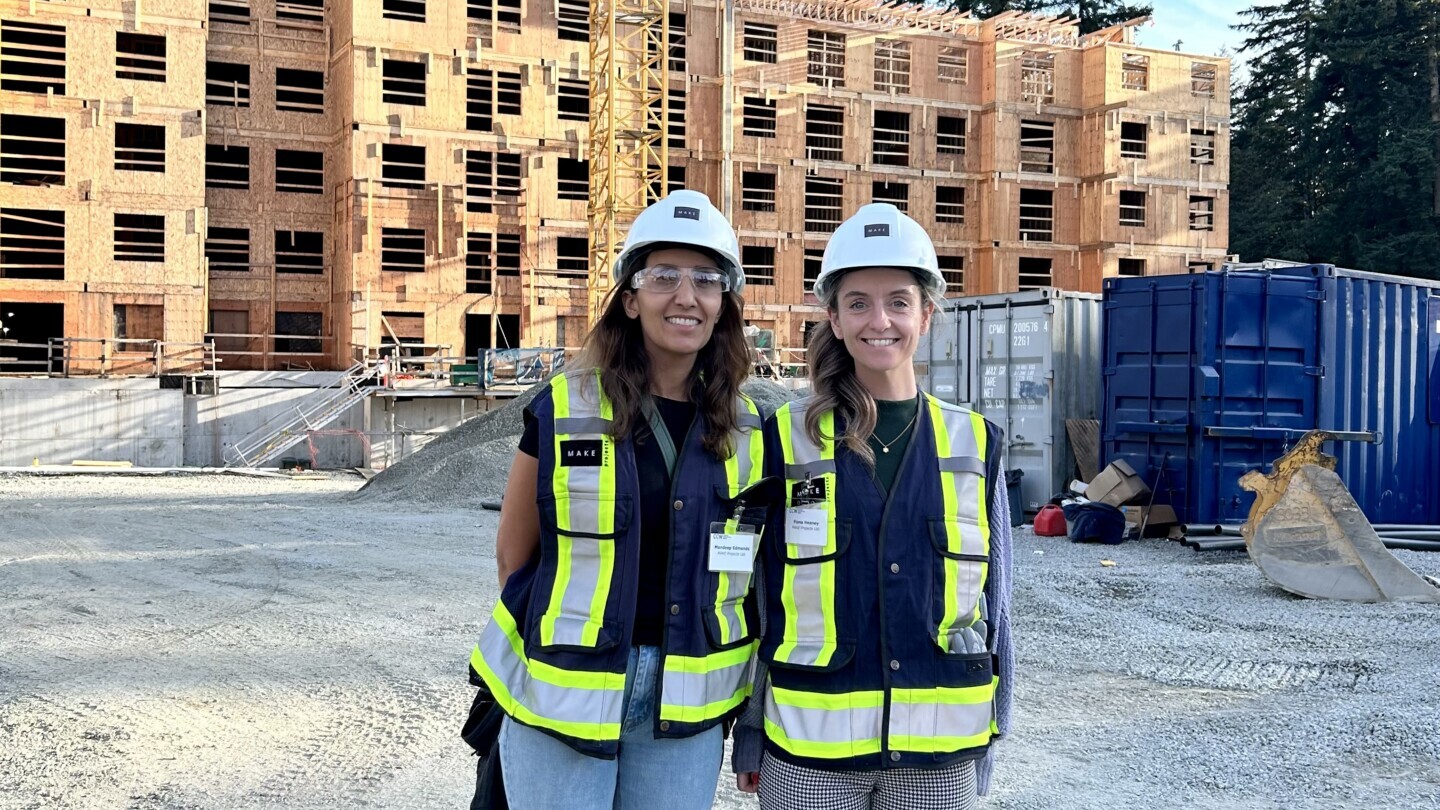Strategically located to serve central Vancouver this health care clinic is a 16,000 square foot clinic aiming to provide essential primary care services such as non-life-threatening examinations, consultation, ultrasound, X-rays and dialysis treatment. As such this facility needs to strike the fine balance through execution to deliver accessible and patient-centric care, considerations for staff and practitioners, integrate sensitive and complex equipment, as well as achieve a high level of design quality into an existing shell space. Delivery of such projects are all about identifying and mitigating risk, much more easily addressed during the design process. In this case, several key areas can be identified where minimizing risk is best addressed and worthy of being highlighted.
Existing Conditions: There were a plethora of slab bands and existing services required to remain to serve upper residential floors that were not documented in existing record drawings. We proposed a 3D point cloud survey that integrated into the team’s BIM models and now are confident that all existing conditions have been captured and considered.
Design Quality: Design quality means to be carefully considered, well-executed and properly coordinated to serve the project’s needs and functions while adhering to strict project budgets and schedules. To best achieve this, we’ve found an integrated team approach utilizing BIM software best allows the team access to real-time coordination and streamlined design resolution. Clash detection through BIM software’s are also a benefit in an integrated team approach to eliminating construction issues during design.
Constructability: With increasing pressures on designers from compressed design schedules to reduced fees, design is often focused on design intent rather than overall resolution of constructability. Typically regarded as the contractor’s responsibility, grey areas are often left open to interpretation that can and often end up as costly change orders. Without access to construction management services on this project, we were left to fill the void to conduct constructability reviews with our in-house cohort of design and construction experienced professionals. A constructability focused second set of eyes on final documentation to eliminate constructability gaps is a benefit for all.
Jurisdictional Engagement: Engage with Authorities Having Jurisdiction early. It is paramount to understand the approvals process early in any project as each jurisdiction has its own nuanced requirements. For this project, the City of Vancouver had a strict series of approval requirements, triggered by Change of Occupancy Use as well as building upgrade pathways that were not brought to the fore until the time of our permit applications. Earlier discussions at the onset of the project to clearly define approvals expectations would most certainly have allowed for more timely resolution of some of these issues.
Many forces act on any given project and the key issues above are translatable beyond health care as there are compounded complications and pressures from political and funding sources. As project managers, our roles are to execute and deliver. And the first step in doing so is by de-risking these projects as much and as early as possible by affecting existing conditions, design quality, constructability, and jurisdictional challenges. Using this project as an example, we hope that some of these lessons learned, and recommendations will help to further the ability of all of those involved in these types of projects to continue to overcome the myriad of challenges and continue to deliver on these cornerstone facilities of community health.









